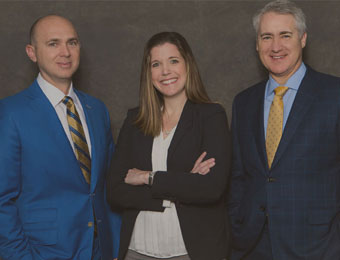Wrongful Death Claim Filed Against Tesla in Autopilot Crash
Wrongful Death Lawyer
Automaker Tesla is being sued over a death involving one of its autopilot cars, reports Tech Crunch.
The wrongful death claim is being brought against the automaker and the State of California’s transportation department by the family of the victim, Walter Huang. The Apple engineer died after the Model X Tesla he was driving crashed into a median on the highway with the Autopilot feature engaged. Huang’s family is alleging that the Autopilot system failed to detect the median, misread lane lines and failed to brake, accelerating into the median instead.
A representative for the family said that automaker is beta testing the software for Autopilot on its drivers, and that Huang’s wife and two children lost their family member as a result.
Other allegations in the lawsuit include failure to warn, defects in a product design, product liability, warranty breach, false advertising and intentional and negligent misrepresentation. California’s transportation department is also named in the claim because the median that Huang’s Tesla hit was missing the attenuator guard, which is meant to ease the impact of an accident. The guard was not replaced after it was damaged in an earlier crash at the same site, according to the lawsuit documents.
Another family representative said that this lawsuit aims to ensure the technology behind semi-autonomous vehicles is safe before those vehicles hit the roads, and that risks are not misrepresented to or withheld from the public.
Just days after Huang’s tragic crash, Tesla published two blog posts and ended up in a disagreement with the National Transportation Safety Board (NTSB), which had sent its own investigators to the crash site. One of Tesla’s posts did acknowledge that Autopilot had been in use at the time of the crash, and that the driver had received visual and an audio hands-on warning earlier in the drive. Additionally. Tesla says the driver’s hand were not detected on the wheel for six seconds before the crash. This post prompted the NTSB to respond, as it was not happy that Tesla had released investigative information. NTSB rules require that a company in an accident investigation does not release details to the public without the board’s approval.
In a second public statement, Tesla blamed Huang for the crash and denied any legal or moral liability for the accident. According to that statement, Huang’s family said the engineer was aware of the Autopilot’s shortcomings and that it was not reliable in the area in which he was driving.
This statement strained the relationship between Tesla and NTSB even further, with Tesla saying it withdrew from its agreement with the NTSB, and the NTSB saying Tesla had been removed as a party to the crash investigation.
While the initial report from the NTSB didn’t conclude what caused the crash, it did find that the car went from 62 to close to 71 miles per hour in the last three seconds before the accident, and it shifted left as it approached the median. The board also found that around 20 minutes before impact, the car did provide one audio alert and two visual alerts regarding the driver putting his hands back onto the steering wheel. Huang’s hands were not detected on the wheel until 34 seconds before impact, and no evasive steering or braking pre-crash was detected.
If you’ve lost a loved one due to the negligence of someone else or their inaction, speak to a wrongful death lawyer in Denver, CO about your case.
Thanks to Richard J. Banta, P.C. for their insight into personal injury claims and wrongful death.





Sorry, the comment form is closed at this time.